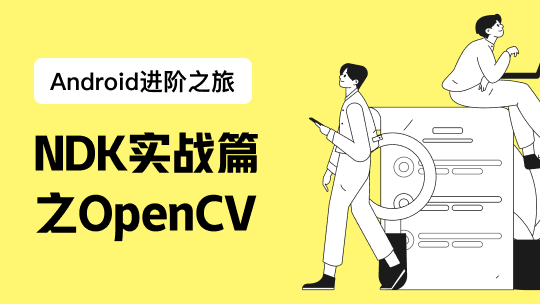Netty
创建Server服务端
Netty创建全部都是实现自AbstractBootstrap。客户端的是Bootstrap,服务端的则是ServerBootstrap。
创建一个 HelloServer
package org.example.hello;
import io.netty.bootstrap.ServerBootstrap; import io.netty.channel.ChannelFuture; import io.netty.channel.EventLoopGroup; import io.netty.channel.nio.NioEventLoopGroup; import io.netty.channel.socket.nio.NioServerSocketChannel;
public class HelloServer {
/** * 服务端监听的端口地址 */ private static final int portNumber = 7878; public static void main(String[] args) throws InterruptedException { //创建两个NioEventLoopGroup,一个是父线程(Boss线程),一个是子线程(work线程) /*父线程组(代码中的parentBosser)担任(acceptor)的角色。负责接收客户端的连接请求, *处理完成请求,创建一个Channel并注册到子线程组(代码中的childWorker)中的某个线程上面 *,然后这个线程将负责Channel的读写,编解码等操作 */ EventLoopGroup bossGroup = new NioEventLoopGroup(); EventLoopGroup workerGroup = new NioEventLoopGroup(); try { //实例化一个ServerBootstrap服务端启动引导程序 ServerBootstrap b = new ServerBootstrap(); //设置bootstrap的线程组 目的在于处理Channel中的事件和IO操作 b.group(bossGroup, workerGroup); //设置Channel类型 b.channel(NioServerSocketChannel.class); /*设置责任链路 *责任链模式是Netty的核心部分。每个处理者只负责自己有关的东西。然后将处理结果根据责任链*传递下去 */ b.childHandler(new HelloServerInitializer()); // 服务器绑定端口监听 ChannelFuture f = b.bind(portNumber).sync(); // 监听服务器关闭监听 f.channel().closeFuture().sync(); // 可以简写为 /* b.bind(portNumber).sync().channel().closeFuture().sync(); */ } finally { bossGroup.shutdownGracefully(); workerGroup.shutdownGracefully(); } }}
EventLoopGroup 是在4.x版本中提出来的一个新概念。用于channel的管理。服务端需要两个。和3.x版本一样,一个是boss线程一个是worker线程。
b.childHandler(new HelloServerInitializer()); //用于添加相关的Handler
服务端简单的代码,真的没有办法在精简了感觉。就是一个绑定端口操作。
创建和实现HelloServerInitializer
在HelloServer中的HelloServerInitializer在这里实现。
首先我们需要明确我们到底是要做什么的。很简单。HelloWorld!。我们希望实现一个能够像服务端发送文字的功能。服务端假如可以最好还能返回点消息给客户端,然客户端去显示。
需求简单。那我们下面就准备开始实现。
DelimiterBasedFrameDecoder Netty在官方网站上提供的示例显示 有这么一个解码器可以简单的消息分割。
其次 在decoder里面我们找到了String解码编码器。着都是官网提供给我们的
package org.example.hello;
import io.netty.channel.ChannelInitializer;
import io.netty.channel.ChannelPipeline;
import io.netty.channel.socket.SocketChannel;
import io.netty.handler.codec.DelimiterBasedFrameDecoder;
import io.netty.handler.codec.Delimiters;
import io.netty.handler.codec.string.StringDecoder;
import io.netty.handler.codec.string.StringEncoder;
public class HelloServerInitializer extends ChannelInitializer<SocketChannel> {
@Override
protected void initChannel(SocketChannel ch) throws Exception {
ChannelPipeline pipeline = ch.pipeline();
// 以("\n")为结尾分割的 解码器
pipeline.addLast("framer", new DelimiterBasedFrameDecoder(8192, Delimiters.lineDelimiter()));
// 字符串解码 和 编码
pipeline.addLast("decoder", new StringDecoder());
pipeline.addLast("encoder", new StringEncoder());
// 自己的逻辑Handler
pipeline.addLast("handler", new HelloServerHandler());
}
}
增加自己的逻辑HelloServerHandler
自己的Handler我们这里先去继承extends官网推荐的SimpleChannelInboundHandler
。在这里C,由于我们需求里面发送的是字符串。这里的C改写为String。
package org.example.hello;
import java.net.InetAddress;
import io.netty.channel.ChannelHandlerContext;
import io.netty.channel.SimpleChannelInboundHandler;
public class HelloServerHandler extends SimpleChannelInboundHandler<String> {
@Override
protected void channelRead0(ChannelHandlerContext ctx, String msg) throws Exception {
// 收到消息直接打印输出
System.out.println(ctx.channel().remoteAddress() + " Say : " + msg);
// 返回客户端消息 - 我已经接收到了你的消息
ctx.writeAndFlush("Received your message !\n");
}
/*
*
* 覆盖 channelActive 方法 在channel被启用的时候触发 (在建立连接的时候)
*
* channelActive 和 channelInActive 在后面的内容中讲述,这里先不做详细的描述
* */
@Override
public void channelActive(ChannelHandlerContext ctx) throws Exception {
System.out.println("RamoteAddress : " + ctx.channel().remoteAddress() + " active !");
ctx.writeAndFlush( "Welcome to " + InetAddress.getLocalHost().getHostName() + " service!\n");
super.channelActive(ctx);
}
}
在channelHandlerContent自带一个writeAndFlush方法。方法的作用是写入Buffer并刷入。
注意:在3.x版本中此处有很大区别。在3.x版本中write()方法是自动flush的。在4.x版本的前面几个版本也是一样的。但是在4.0.9之后修改为WriteAndFlush。普通的write方法将不会发送消息。需要手动在write之后flush()一次这里channeActive的意思是当连接活跃(建立)的时候触发.输出消息源的远程地址。并返回欢迎消息。
channelRead0 在这里的作用是类似于3.x版本的messageReceived()。可以当做是每一次收到消息是触发。我们在这里的代码是返回客户端一个字符串"Received your message !".
注意:字符串最后面的"\n"是必须的。因为我们在前面的解码器DelimiterBasedFrameDecoder是一个根据字符串结尾为“\n”来结尾的。假如没有这个字符的话。解码会出现问题。 ### 创建Client客户端 ``` package org.example.hello;
import io.netty.bootstrap.Bootstrap; import io.netty.channel.Channel; import io.netty.channel.EventLoopGroup; import io.netty.channel.nio.NioEventLoopGroup; import io.netty.channel.socket.nio.NioSocketChannel;
import java.io.BufferedReader; import java.io.IOException; import java.io.InputStreamReader;
public class HelloClient {
public static String host = "127.0.0.1";
public static int port = 7878;
/**
* @param args
* @throws InterruptedException
* @throws IOException
*/
public static void main(String[] args) throws InterruptedException, IOException {
EventLoopGroup group = new NioEventLoopGroup();
try {
Bootstrap b = new Bootstrap();
b.group(group)
.channel(NioSocketChannel.class)
.handler(new HelloClientInitializer());
// 连接服务端
Channel ch = b.connect(host, port).sync().channel();
// 控制台输入
BufferedReader in = new BufferedReader(new InputStreamReader(System.in));
for (;;) {
String line = in.readLine();
if (line == null) {
continue;
}
/*
* 向服务端发送在控制台输入的文本 并用"\r\n"结尾
* 之所以用\r\n结尾 是因为我们在handler中添加了 DelimiterBasedFrameDecoder 帧解码。
* 这个解码器是一个根据\n符号位分隔符的解码器。所以每条消息的最后必须加上\n否则无法识
别和解码
* */
ch.writeAndFlush(line + "\r\n");
}
} finally {
// The connection is closed automatically on shutdown.
group.shutdownGracefully();
}
}
}
- ### HelloClientInitializer
package org.example.hello;
import io.netty.channel.ChannelInitializer; import io.netty.channel.ChannelPipeline; import io.netty.channel.socket.SocketChannel; import io.netty.handler.codec.DelimiterBasedFrameDecoder; import io.netty.handler.codec.Delimiters; import io.netty.handler.codec.string.StringDecoder; import io.netty.handler.codec.string.StringEncoder;
public class HelloClientInitializer extends ChannelInitializer
@Override
protected void initChannel(SocketChannel ch) throws Exception {
ChannelPipeline pipeline = ch.pipeline();
/*
* 这个地方的 必须和服务端对应上。否则无法正常解码和编码
*
* 解码和编码 我将会在下一张为大家详细的讲解。再次暂时不做详细的描述
*
* */
pipeline.addLast("framer", new DelimiterBasedFrameDecoder(8192, Delimiters.lineDelimiter()));
pipeline.addLast("decoder", new StringDecoder());
pipeline.addLast("encoder", new StringEncoder());
// 客户端的逻辑
pipeline.addLast("handler", new HelloClientHandler());
}
}
- ### HelloClientHandler
package org.example.hello;
import io.netty.channel.ChannelHandlerContext; import io.netty.channel.SimpleChannelInboundHandler;
public class HelloClientHandler extends SimpleChannelInboundHandler
@Override
protected void channelRead0(ChannelHandlerContext ctx, String msg) throws Exception {
System.out.println("Server say : " + msg);
}
@Override
public void channelActive(ChannelHandlerContext ctx) throws Exception {
System.out.println("Client active ");
super.channelActive(ctx);
}
@Override
public void channelInactive(ChannelHandlerContext ctx) throws Exception {
System.out.println("Client close ");
super.channelInactive(ctx);
}
}













